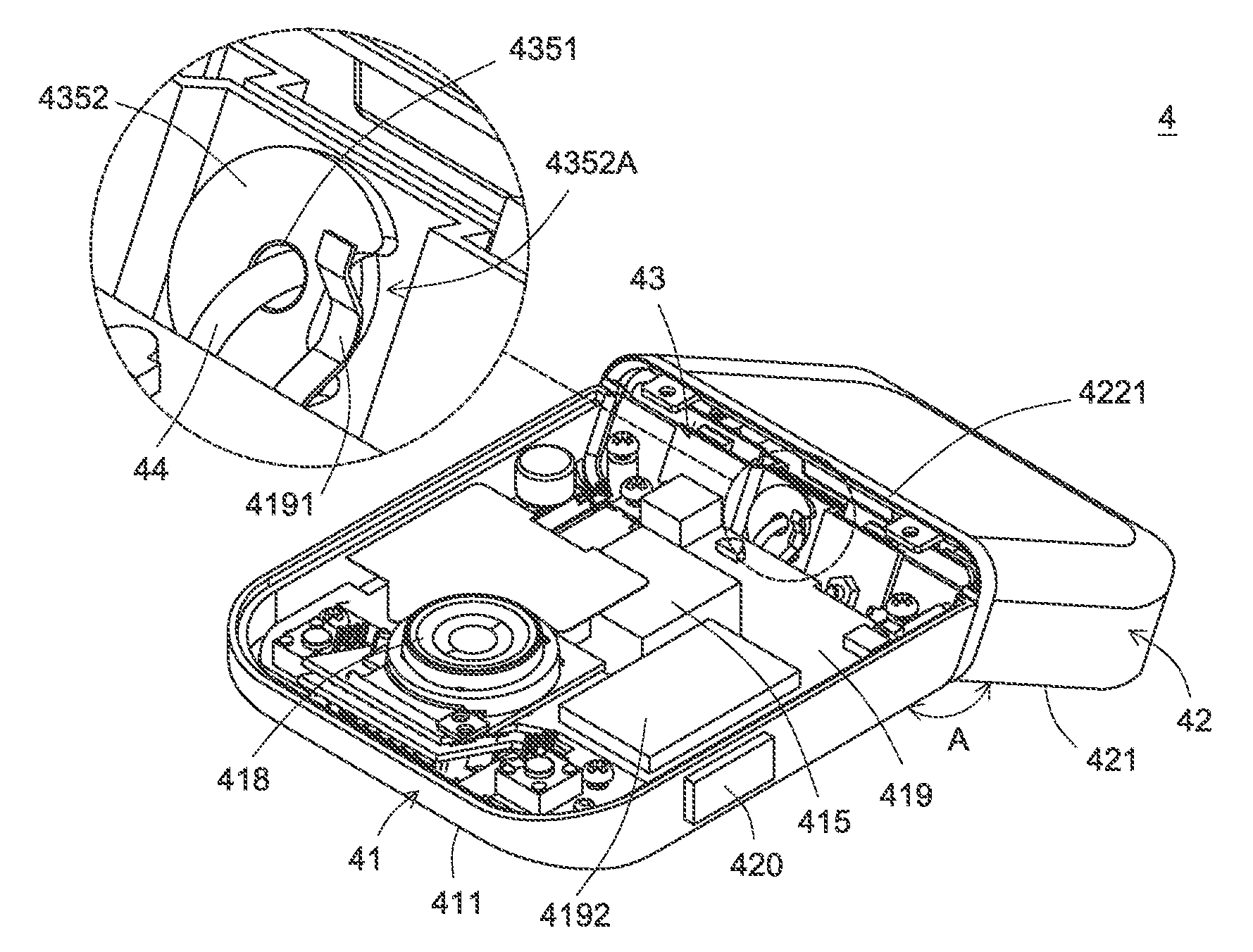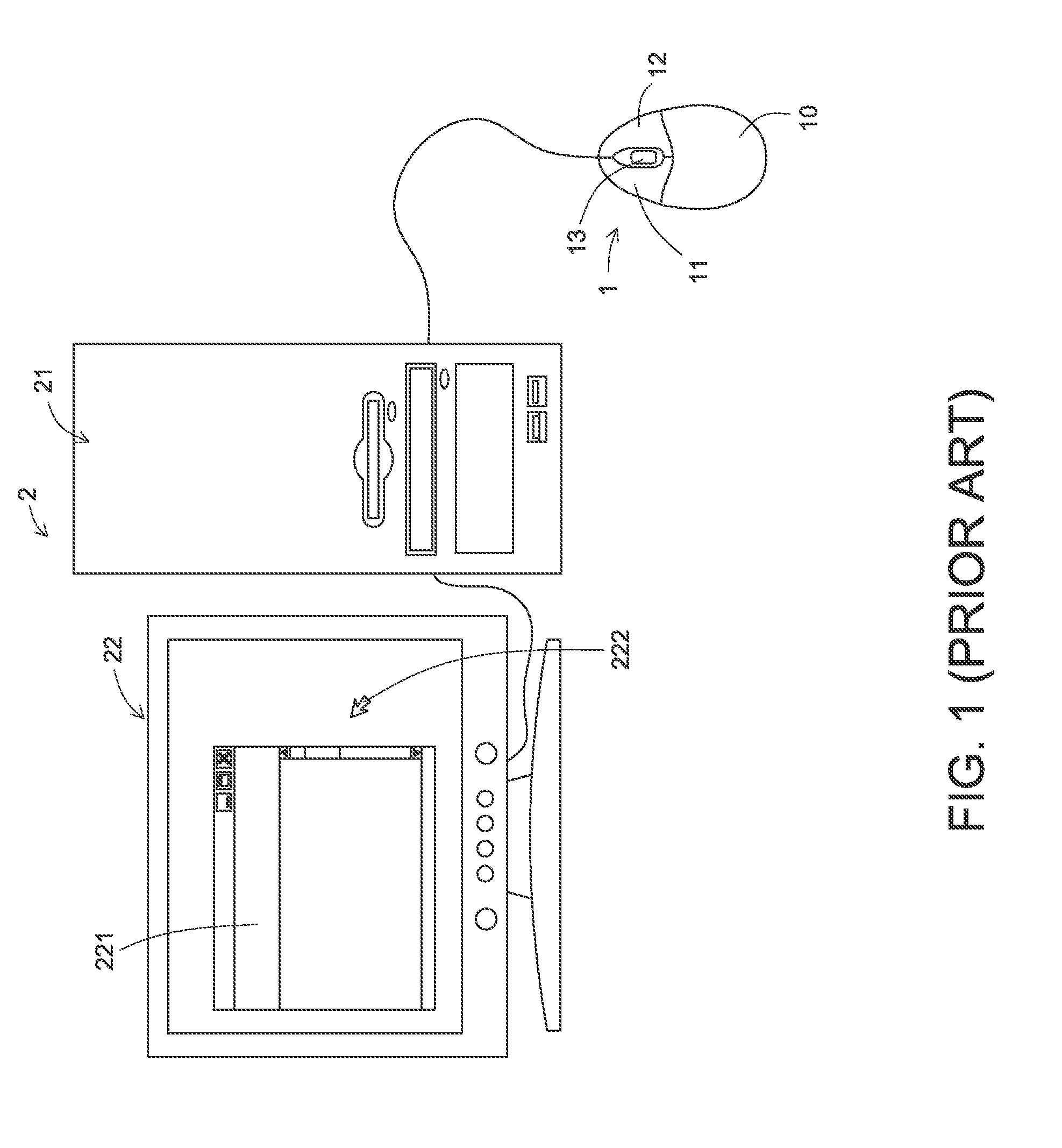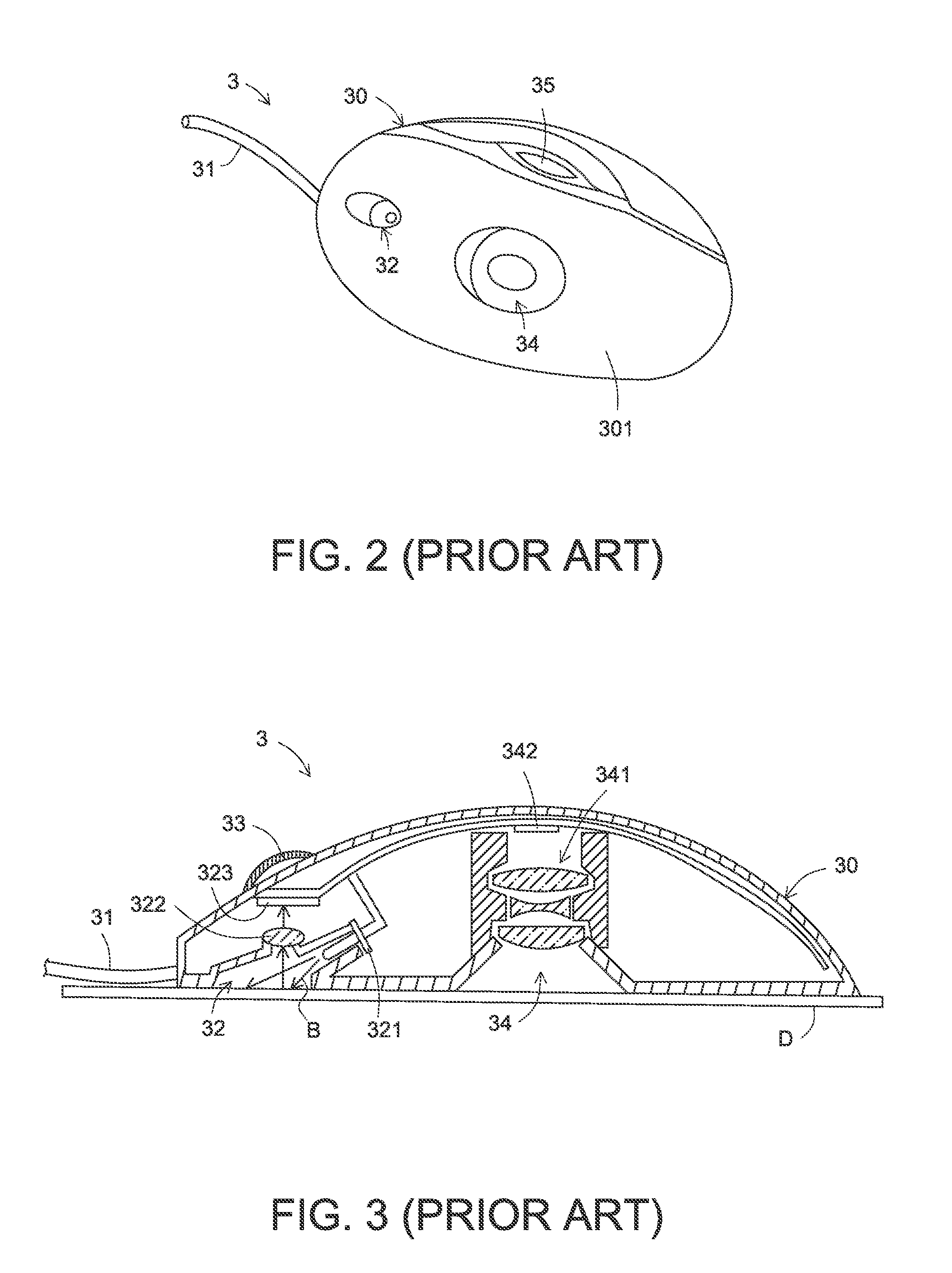Shape-changeable camera mouse
- Summary
- Abstract
- Description
- Claims
- Application Information
AI Technical Summary
Benefits of technology
Problems solved by technology
Method used
Image
Examples
Embodiment Construction
[0031]For obviating the drawbacks encountered from the prior art, the present invention provides a shape-changeable camera mouse. FIG. 4 is a schematic diagram illustrating the connection between a shape-changeable camera mouse and a computer system according to an embodiment of the present invention. As shown in FIG. 4, the shape-changeable camera mouse 4 comprises a first casing 41, a second casing 42, a wireless emitter 45 and a wireless receiver 46. The wireless emitter 45 is disposed within the first casing 41 for generating a wireless signal S. The wireless receiver 46 is connected with a computer system 5 for receiving the wireless signal S. In this embodiment, the computer system 5 is a notebook computer.
[0032]Hereinafter, the configurations of the shape-changeable camera mouse will be illustrated with reference to FIG. 5. FIG. 5 is a schematic partial exploded view illustrating the shape-changeable camera mouse according to the embodiment of the present invention. In additi...
PUM
 Login to View More
Login to View More Abstract
Description
Claims
Application Information
 Login to View More
Login to View More - R&D
- Intellectual Property
- Life Sciences
- Materials
- Tech Scout
- Unparalleled Data Quality
- Higher Quality Content
- 60% Fewer Hallucinations
Browse by: Latest US Patents, China's latest patents, Technical Efficacy Thesaurus, Application Domain, Technology Topic, Popular Technical Reports.
© 2025 PatSnap. All rights reserved.Legal|Privacy policy|Modern Slavery Act Transparency Statement|Sitemap|About US| Contact US: help@patsnap.com



